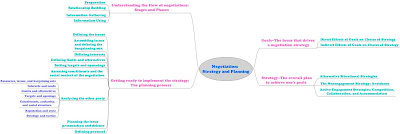A positive public image or reputation is very important for company’s ability to achieve all other measures of success. The companies with the best corporate reputations outperform all others. One of the main important jobs of leadership is to manage the public’s perception of an organization to become positive, and in particular, to remain the positive image for the top leader’s personal image. The leaders determine the personality of the organization on the inside, they also shape the outside image. An organization has an ethos, just as an individual does. Therefore, the goal of organizational leaders is to ensure that the company’s ethos is positive, which means audiences consider the company honorable, trustworthy, and ethical. Managing external relations effectively is essential to achieving that goal and essential to leadership communication in any organization.
This chapter is focused on discussion about external relations, which falls into public relations, including press and media management, philanthropic activities, community involvement, investor relations, and external publications. Every organization needs to manage these aspects of external relations very carefully since they all affect the organization’s public ethos and organization’s success.
First of all, organization has to develop communications strategy and framework to make connection with external audiences. For the best strategy, the company has to clarify a central and consistent purpose to audiences. A company’s internal and external image need to be consistent and all the logos, slogans and promotional materials need to reflect the personality of organization. Besides looking at the organization’s ethos, a company has to be able to identify all stakeholders who may be affected by activities or interested in or influenced by its messages and image.
Once all stakeholders are identified, the company has to work hard to develop both general message and specific messages to reach individual groups. Importantly, an organization’s leader need to spend time to ensure that all messages are consistent, honest, clear, and meaningful. The messages also need to be simple and contained enough information to be meaningful to any audience. Moreover, only the right messages cannot reach all audiences if the right person does not deliver them. Therefore, the company needs to select the right spokesperson to deliver the messages. The spokesperson must project a positive ethos for the company and show his credibility to audiences.
In addition, another critical component of external relations is the effective medium to ensure reaching the identified stakeholders. The company needs to get the right medium to communicate with audiences and get into their responses, also at the best timing, not too late before the crisis ruins company’s reputation. At last, for the best strategy, a company has to be able to monitor the result and their reputations constantly. The company should be able to measure specifically the impact of day-to-day and major messages on their major constituencies.
Reputation affects the bottom line, and even the strongest companies will have difficulty surviving damage to their reputations. Leaders of organization must give high priority to establishing and maintaining a positive corporate image and, today more than ever, that means, keeping the public, customers, and all other external stakeholders happy. Organizations must link all communication activities to ensure that what the outside world sees and hears reflects what the inside world lives. Today, the public expects companies to demonstrate social responsibility and to behave ethically in all they do internally and externally.
All leaders of organizations must realize that their companies’ reputations depend on their internal ethos and the perceptions of their many external stakeholders. They cannot ignore the importance of establishing and maintaining a positive reputation or the need to manage external relations to keep it.



















